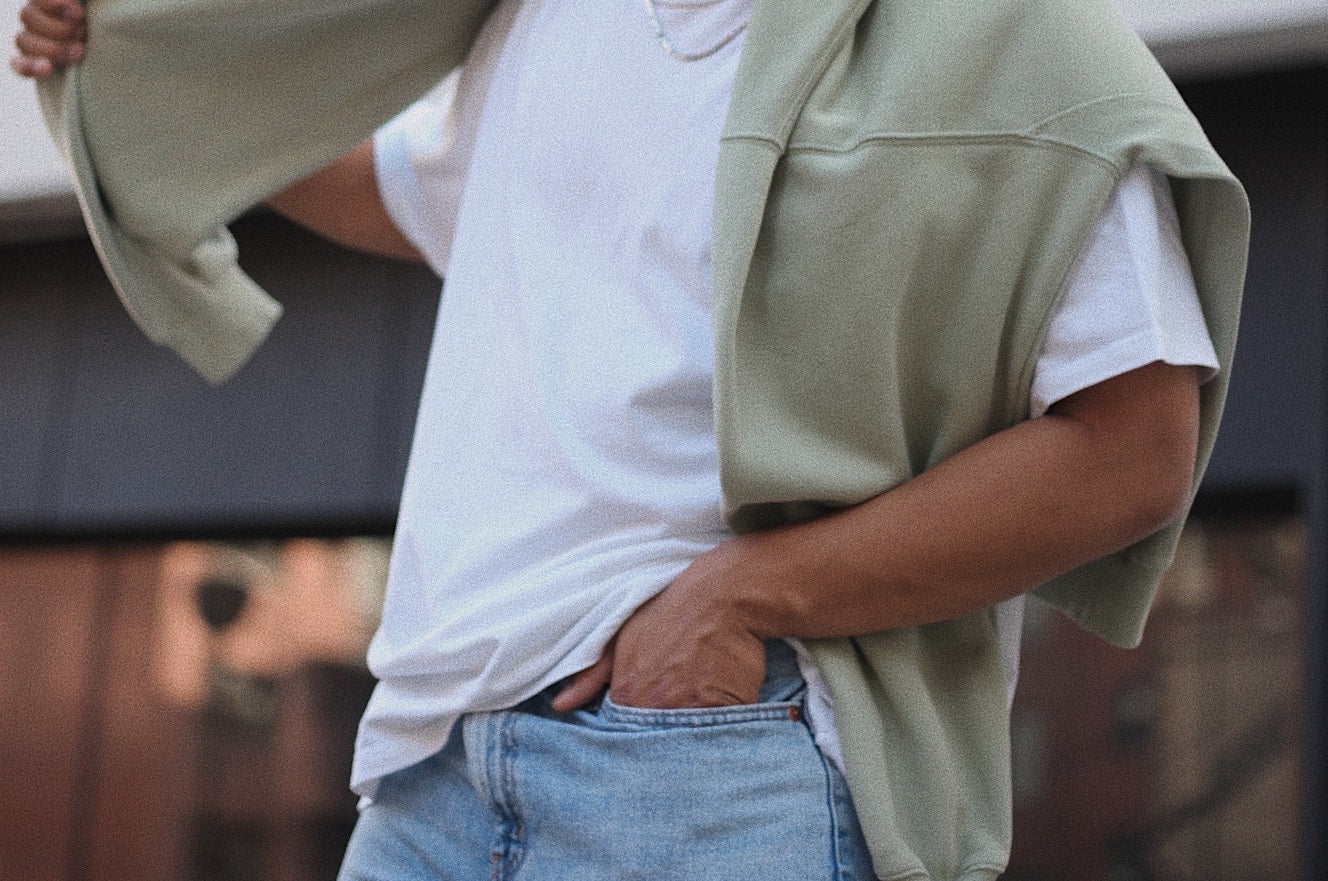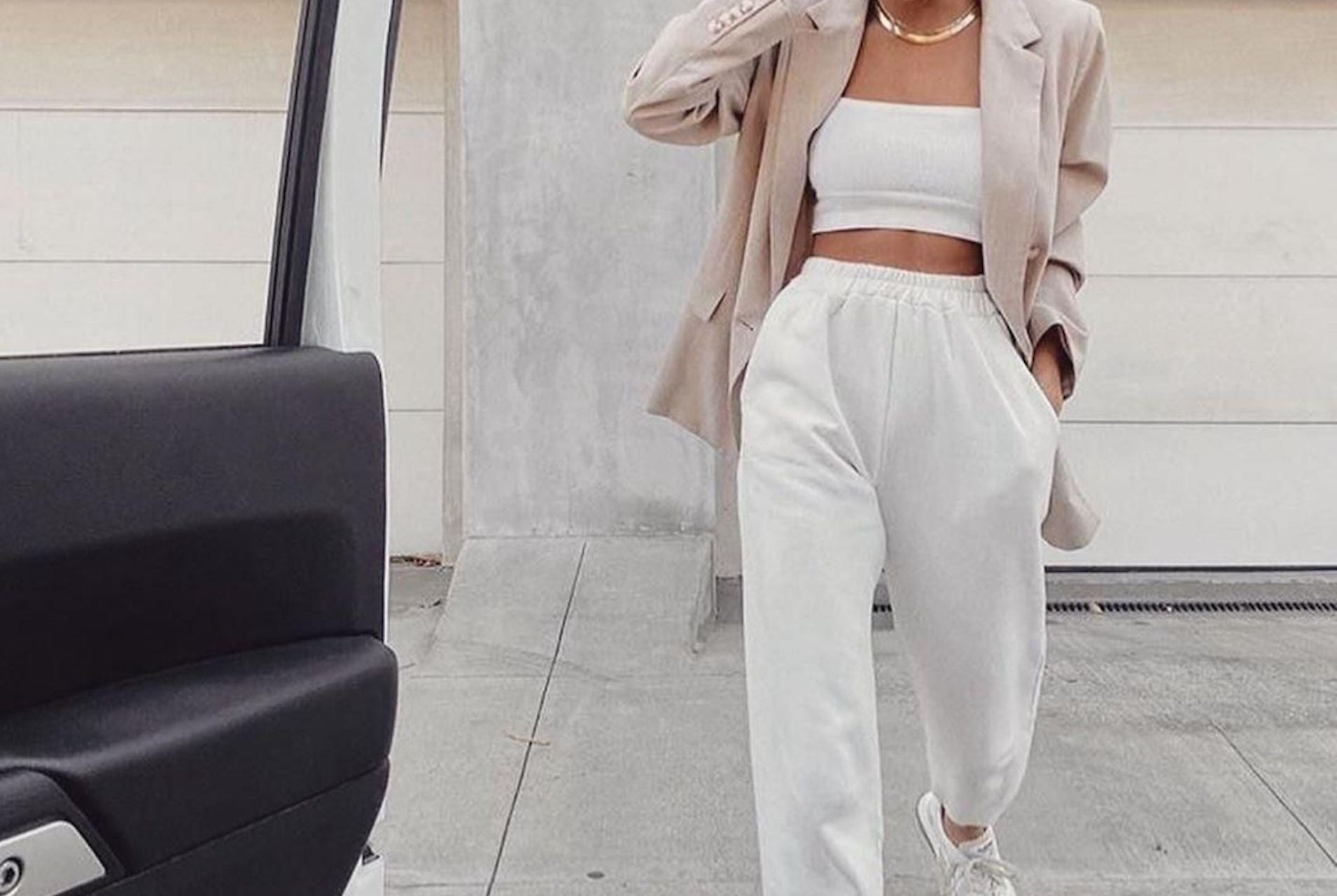Summer’s just around the corner, which means it’s time for the T-shirt to reappear after some time in dormancy catching dust in our wardrobes. That said, while summer is certainly the season of the tee, there are different types of T-shirts that you can wear, some working far better than others in the heat.
Take the inevitable heat waves you get these days. If you put on a heavyweight T-shirt in those kinds of conditions, that’s going to feel a little suffocating. It’s better to be prepared with the perfect summer tee.
Which is what we’re going to advise on but before we start, here’s a quick summary of what types of T-shirts work best in the heat. Feel free to skip past these intro points to get to the detail.
-
Made from a natural fabric, like cotton
-
Soft, breathable, and ideally sustainable fabric
-
Avoiding synthetic fabrics and blends, like polyester
-
Lighter in colour, absorbing less heat
-
Lightweight and avoiding GSMs of over 200
-
Look out for innovative new fabrics, like Lyocell
First part of the puzzle then, what fabrics work best in the heat?
Cotton – an absolute classic
Cotton is an absolute classic for summer because it has all of the qualities to keep you cool and comfortable. It’s a natural plant-based fabric, meaning it’s soft and breathable, it’s absorbent, and because it’s a natural material, it’ll feel kind on the skin and not cause you any irritation. Put simply: It just works and feels great.
Not all cottons are made equally though - low quality cottons like Highland cotton won’t hold their own like higher-quality cottons. They aren’t as soft, durable, and breathable. So another thing to do when choosing a tee is to select a high-quality cotton such as certified organic cotton (used in POMP’s sustainable essential and print tees).
And remember that with high-quality organic cotton, you’ll also get a boost to the sustainability of your tee, which is important. Wearing an item that’s kinder on the planet and the people who’ve made it certainly can’t be sniffed at these days.
A few of the other fabrics that fit summer
Cotton is the classic but there are some other natural fabrics that work well. One you’re probably aware of is the summer staple, linen. This is a fabric that’s made from the flax of the Linum plant. It’s known for its distinctive textured look.
It’s also known for how refreshing and cool to the touch it is, which is why it works so well in the heat and on holidays. It’s one of the most breathable fabrics there is. Still, linen does have its disadvantages. It’s tough to take care of and to take out the wrinkles that appear with so little effort. It’s also a bit scratchy and it has a particular ‘on vacation’ kind of look.
Chambray is another fabric that works well. It’s the lightweight cousin of heavier denim but the ‘chambray look’ isn’t quite on-trend at the moment, and it’s not as versatile as cotton.
Lastly, there are some innovative fabrics appearing, such as Lyocell, which are soft, breathable, durable and also made sustainably. These fabrics can be harder to find and often a touch pricier but we’ll be seeing more of them over the coming years. If you’d like to know more about Lyocell, an interesting fabric that’s made from processed wood pulp, then take a look at this guide.
Fabrics that are best avoided in hotter conditions
There is one type of fabric that hotter weather doesn’t suit at all, and that’s synthetic fabrics. As opposed to natural fabrics like cotton and linen, these fabrics are made from man-made fibres. They aren’t as soft and breathable as natural fabrics. And they also aren’t hypoallergenic, meaning they tend to irritate the skin - especially when you’re hot and sweaty.
One of the most well-known synthetic fabrics is polyester, which is by some measures the most widely used textile in the world. It’s not typical for a tee to be made completely from polyester but it’s still advised to avoid wearing it when it’s used in blends. Synthetic fabrics are also not biodegradable and can leak microplastics into the water when washed. So they’re best avoided from a sustainability perspective, too.
It’s not just about synthetics. There are a few natural fabrics that are harder to wear in heat. One example being denim, which is often too heavy for hotter conditions, even though it could give you some edge look-wise. And returning to synthetic fabrics, ‘stretch’ denim is worth steering clear of, as the stretch typically uses synthetics to achieve the stretchiness.
What about colours and other factors?
An interesting aspect of the perfect summer tee is colour. Is the old adage true that lighter colours are better to wear in the summer because they don’t absorb as much heat?
Actually, there’s not a complete consensus on this. On one hand it is true that darker colours absorb more heat. We’re not going to go into the science of how that happens but if you’d like to know more, then check this guide.
On the other hand, though, it’s not quite as simple as that. Some researchers suggest that there could be counteracting influences that make dark colours just as cool to wear as light ones. For example, black might absorb more heat from external sources but that means it’ll also draw heat away from the body better! After all, if black colours were so suffocating to wear in the heat, why do Bedouins wear black robes in the desert!
Still, despite the debate, the overall evidence still seems to favour lighter colours. Don’t worry though, at POMP we’ve got you covered with all sorts of plain colours and print designs anyway!
Last but not least, an important aspect is the thickness of the fabric. Sometimes this is published on labels as ‘GSM’, meaning ‘grams per square metre’. It’s better to go for a low-ish GSM in hotter conditions and avoid those that give a GSM of over 200. At POMP, all of our tees are midweight and stay under this range.
Conclusion
If you’re looking for a T-shirt that’s going to keep you in great shape this summer, then the classic fabric to go for is cotton. All considered, it’s the best option. But remember to opt for a quality cotton that’s also sustainable - such as certified organic cotton. Apart from that, we recommend going for something a little lighter in colour and of light- to mid-weight thickness.
Take a look at some of the links below if you’d like to see some of our summer-friendly T-shirts!




